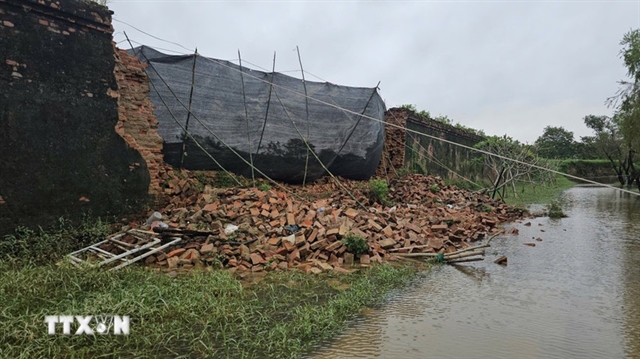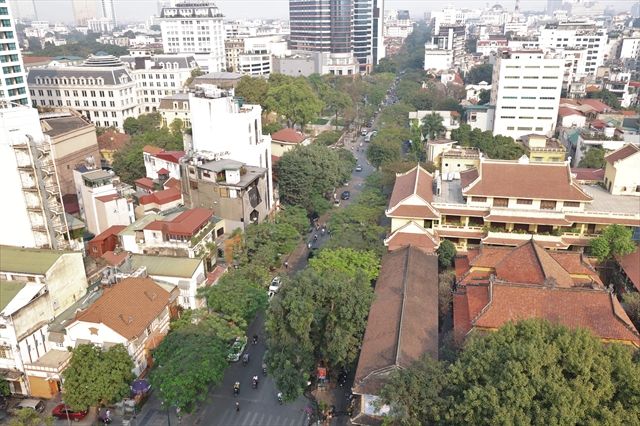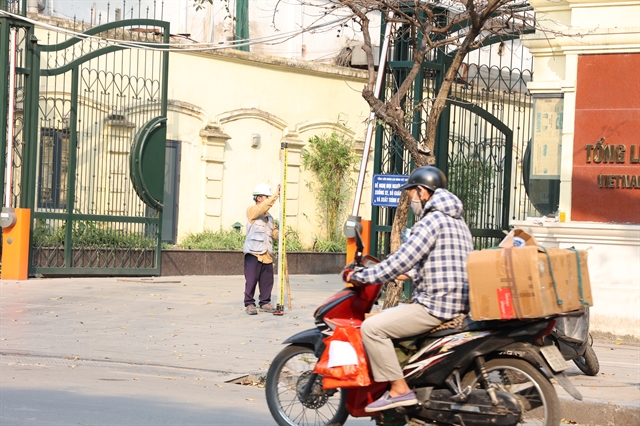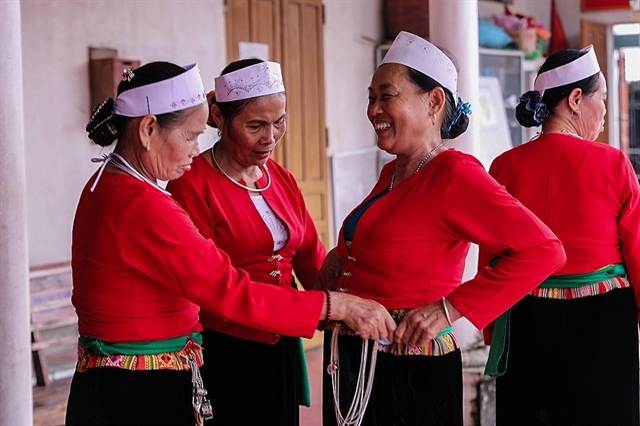 Society
Society

 |
| Lê Thị Hà sits by a fan as high temperatures arrive early in the capital. VNS Photo Vân Nguyễn |
Vân Nguyễn*
Additional reporting by Seán Nolan and Minh Dũng
HÀ NỘI — Lê Thị Hà has lived and worked in Hà Nội for more than ten years, but this is the first time she has experienced unusually high temperatures during this time of the year.
Temperatures in the capital neared 36 degrees Celsius in the past two days, a level often seen later during summer. The heat is forecast to continue until the end of this week.
“The weather in Hà Nội now is hotter than the previous years," said Hà, who works as a waitress at a local bia hơi. "Though it’s just the second lunar month, the temperature is high, making us feel quite tired.”
Localities in central Việt Nam topped 39 degrees Celsius with most of the country approaching 30 degrees, according to the weather forecast. Such high temperatures usually come in the summer.
According to Nguyễn Văn Hưởng, head of the National Centre For Hydro-Meteorological Forecasting’s Weather Forecast Department, low-pressure areas and foehn winds have contributed to the early arrival of the heat this year.
“Currently, all northern, central and southern regions are experiencing increasingly high temperatures," Hưởng said.
"It is pretty normal for the southern region to experience heat during this time of the year.
“But for northern and central regions, the heat is arriving earlier compared to other years. The reason is due to the impact of a low-pressure system in the west, coupled with the effects of the foehn wind.”
The sudden and drastic change in temperature has left many in the capital perplexed and worried about the impacts on health.
 |
| The high temperatures in the capital this week have taken many by surprise. VNS Photo Seán Nolan |
Dương Thị Nội, a 54-year-old resident of Hà Nội, said: “I found the weather strange and unusual. This time of the year should be spring. But this year, the heat came very suddenly.
“Intense sunshine will affect health more or less. However, people can still overcome it.”
For Vũ Thị Hằng, the changing weather impacts her plans and preparations for upcoming travel trips.
"It is normally cooler during this time of the year," she said. "For me, weather like this is still very nice.”
As an avid traveller, outfits are very important as she is keen on capturing photos to preserve memories.
"My outfit plans change along with the dramatic weather shifts," she said.
The bright sky with sunlight also helps uplift people’s moods after the winter, she said, while taking a stroll near Quán Sứ Pagoda in Hà Nội.
{ "id": "wU6d476jl1", "type": "myToolVideo", "data": { "data": "" } }
Weather forecast expert Hưởng warns that more heat waves are expected this year.
“In 2023, the La Nina is weakening towards the end of its cycle," Hưởng said when asked about the forecast for this year’s weather. "In the second half of the year, with the expected impacts of the El Nino, there will be 11 to 13 storms and tropical depressions in the East Sea, about half of which will affect the mainland.”
“Regarding the heat, we already see the hot weather arriving earlier in northern and central regions than usual. More frequent and intense heat waves are expected to occur this year than in 2022.”
International scientists have warned about the re-emergence of the El Niño climate phenomenon later this year. It is expected to cause a significant rise in global temperatures and unprecedented heat waves.
According to researchers, residents living in urban areas, particularly in the inner parts of cities, are put at a higher risk of being exposed to extreme heat due to the urban heat island effect, a phenomenon in which the temperature of an urban area is warmer than that of the surrounding rural area.
Various factors, including differences in green space, surface roughness, emissivity, and geometry, cause this.
For someone like Hà, who has to work in an open space in Hà Nội with shrinking green space and more concrete buildings, heat waves mean sweat and tiring labour as electric fans are not enough to cool the body.
“Hot weather makes labourers like us very tired because we have to work outdoors," Hà said, noting that the temperatures went up to 40 degrees in Hà Nội a few years ago. "But we get used to it and have no problem with it.”
 |
| Exposure to extreme heat waves can put many who have to work outdoors at risk of adverse health effects. VNS Photo Vân Nguyễn |
In 2020, the northern region of Việt Nam recorded more than 20 sweltering days in June. The average temperatures were 1.5-2.5 degrees Celsius higher than in previous years, making this the longest heat wave to hit the region since 1971.
With more frequent and intense heat waves, there are concerns about the potential impact on public health.
According to the World Health Organization, hot weather that lasts for several days can significantly influence people’s lives, including an increase in heat-related diseases.
Heat waves are among the most dangerous of natural hazards but rarely receive adequate attention because their death tolls and destruction are not always immediately obvious, it said.
Research on the effects of extreme temperatures on mortality and hospitalisation in HCM City found that while high temperatures significantly increase the risks of both mortality and hospitalisations for respiratory diseases, heat waves result in a significantly elevated mortality risk among residents of the southern city.
The research, conducted by a group of local and international researchers in 2019, suggested that public health adaptation and prevention programs, such as those aimed at developing early warnings and response plans, should be implemented to protect residents from the risks of negative health effects caused by the extreme heat waves.
Other measures include improving the capacity of healthcare systems to adapt to climate change-related extreme weather events, educating community members to minimise the effects of high temperatures, and establishing temperature shelters in residential hot spots. — VNS




